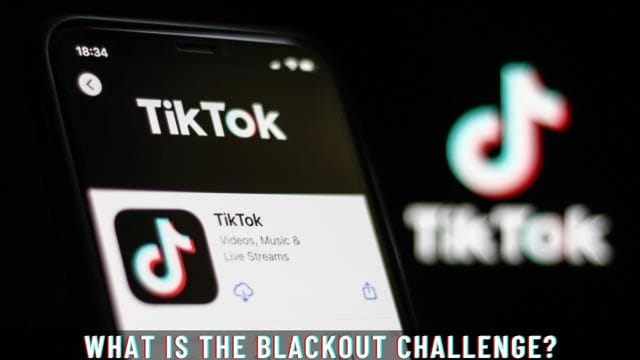What is the Blackout Challenge? Why Parents Worried About Online Trend?

TikTok is no stranger to harmful viral trends. From “dry-scooping” to climbing on towering stacks of milk crates to removing your IUD, as well as consuming large amounts of frozen honey and corn syrup, the “blackout challenge” is the latest in a succession of activities that can damage participants and even result in death.
According to People, the “blackout challenge” has existed at least since 2008, but it resurfaced on TikTok in 2021. According to the CDC, more than 80 deaths were related to the practice when it initially began, prompting experts to warn young users from trying it.
What is TikTok’s Blackout Challenge?
TikTok’s Blackout Challenge encourages participants to hold their breath until they pass out from lack of air. It is also known as the “choking challenge” and the “passing out challenge.”
Archie Battersbee, the 12-year-old boy who suffered a severe brain injury as a result of his effort, is just one of many youngsters whose families have been devastated by the challenge, four youngsters under the age of 12 have perished as a result of their attempts to replicate the challenge.
It is believed that adolescents are eager to attempt the challenge since it entails actively attempting to suffocate oneself or another to get a brief euphoric state or “high.” However, prolonged strangling can lead to death or serious harm.

When did the Blackout Challenge Begin?
The Blackout Challenge is not as new as you may believe; it originated in 2008 as a choking game, but is now circulating on TikTok and consequently reaching a different audience.
According to research published by the Centers for Disease Control and Prevention, the fad has resulted in more than 80 deaths in the past. Experts are warning young users not to partake in the habit (opens in new tab).
A spokeswoman for TikTok told Individuals that “this horrific ‘challenge,’ which people appear to have learned about from places other than TikTok, predates our platform and has never been a TikTok trend.”
“We remain attentive in our commitment to user safety and will remove any similar information quickly if discovered,” they added.
Who Created the Blackout Challenge?
It is unknown who invented the Blackout Challenge, however, WLWT reported that a teacher let students play the game at school, and in 2016 a report warned that the choking game was returning to schoolyards via YouTube.
Blackout Challenge has been banned for violating TikTok’s terms of service, so any videos of users attempting the challenge that has since been posted on the platform have been removed. Those who search for the term Blackout Challenge receive a message that the term has been banned for violating the platform’s terms of service.
Why Parents are Worried about this Trend
Parents are warned about the growing popularity of the Blackout Challenge on TikTok among youngsters and adolescents. Here is all you need to know and how to discuss it with your children.
The social media site can be a helpful resource for discovering the jean sizing hack or tasty recipes, but it also has a sinister side. You may have heard of the controversial and simply misogynistic Andrew Tate, but the Blackout Challenge is another disturbing trend you should be aware of.

The Blackout Challenge is a craze that is proven to be perilous, if not lethal since it has reportedly killed four children this year and is believed to be responsible for the tragic Archie Battersbee tragedy. Our Family Editor at Goodto.com, Stephanie Lowe, informs us; “This challenge’s tenacity in the social media realm is frightening.
It began in 2008, fourteen years ago, and keeps reappearing for influential new eyes to view. I believe the most important thing for parents to do is to discuss it openly and objectively. Children are more receptive to dialogues occurring around them, therefore discuss it freely in front of them.”
RELATED TOPICS:
